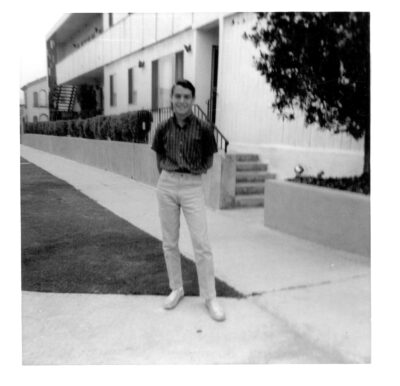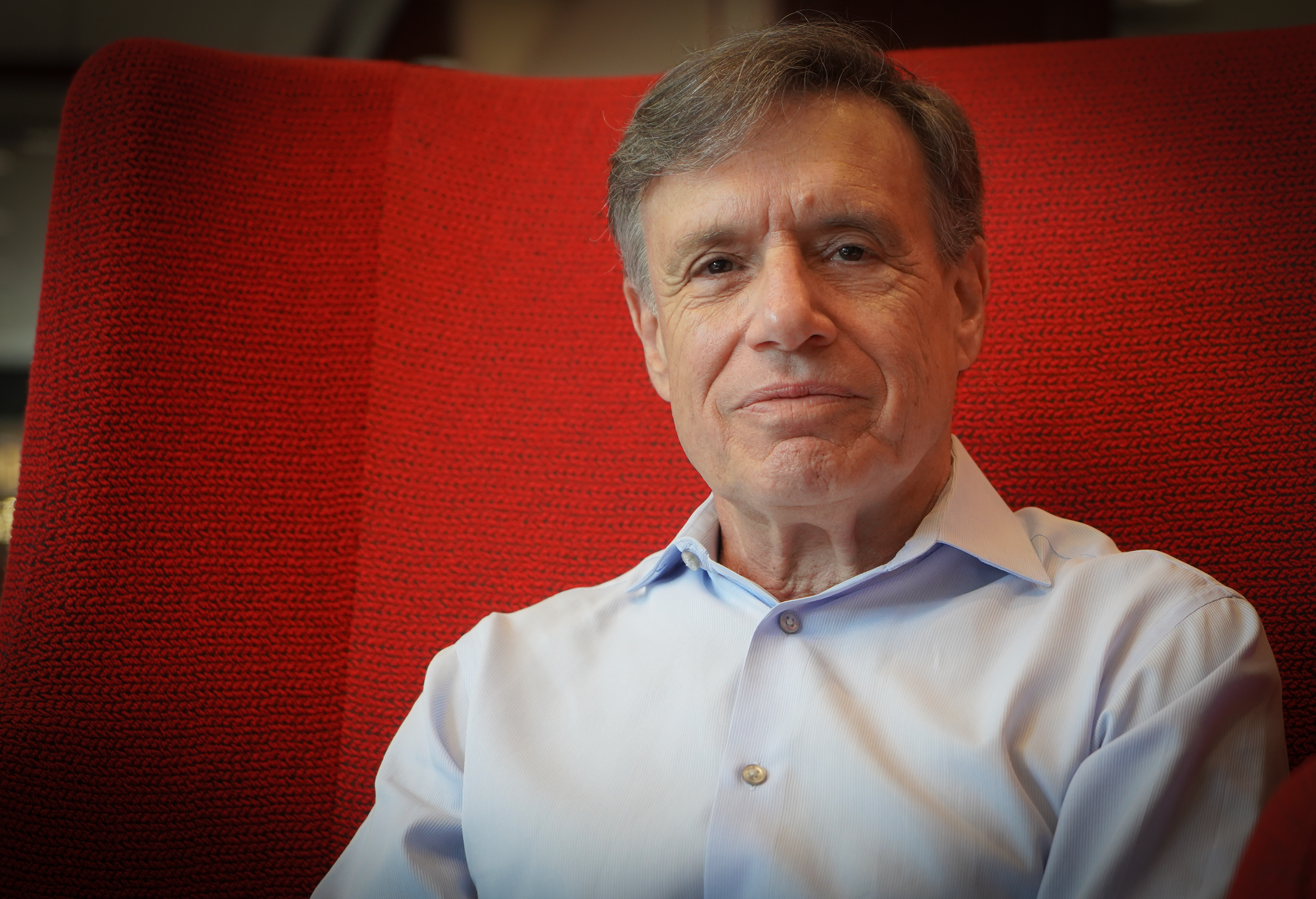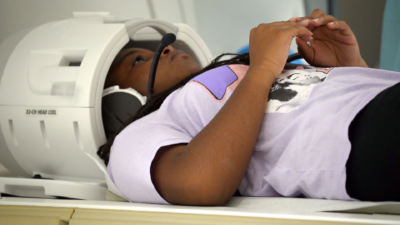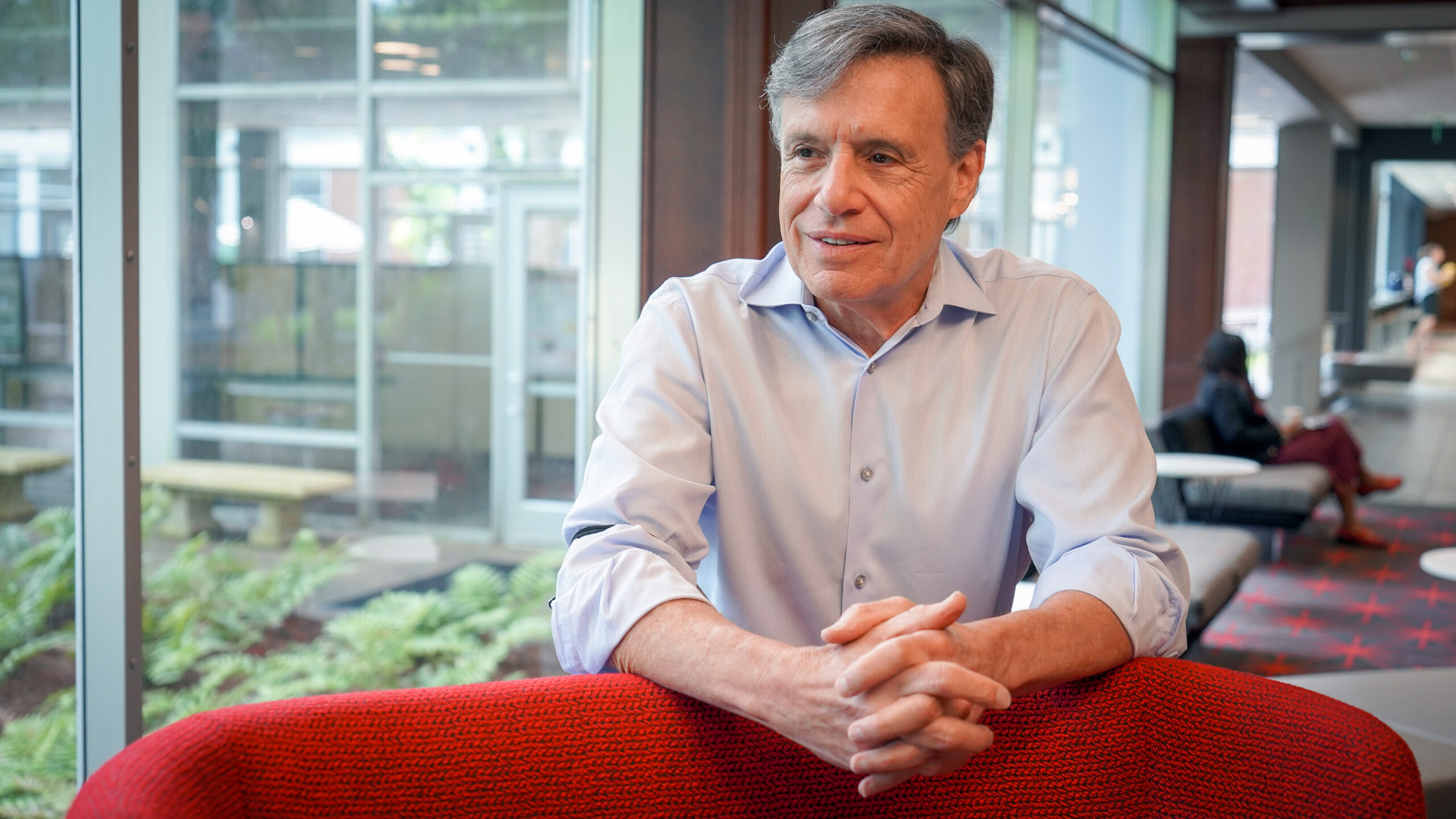Making the invisible visible
Making the invisible visible
Gene Brody’s contribution to science and UGA

The Center for Family Research (CFR) can trace some of its roots to, of all places, the Arizona desert.
While working on his doctorate in psychology at The University of Arizona, Gene Brody found himself part of a research team funded by the Children’s Television Workshop. They were trying to provide Sesame Street with strategies that could promote cognitive development. One of Brody’s tasks was to find ways to encourage development of seriation—the ability in children’s minds to order things from smallest to largest or from largest to smallest.
“In my infinite wisdom,” Brody says in self-deprecation, “I built some stairs so I could demonstrate this concept.” He used them when teaching children on the Papago Indian Reservation but got blank faces in response. “That was the first time they’d ever seen stairs,” he says.
It taught him an important lesson: context greatly influences development. He saw in this experience a stark example of the reality that environment—neighborhoods, culture, circumstances—affect people’s experience with the world and must be considered when researchers are trying to answer questions about human development.
That lesson reemerged in 1988 when Brody was associate vice president for research at UGA. As part of his effort to understand how research from the university affected Georgians, he conducted his own personal listening tour around the state. While talking with a group of rural, Black businessmen one day, he told them he was a child psychologist who studied kids and families. They asked him, “What do you know about our families?” He had to admit, not much. But he promised to learn.
He went back to campus and started reading everything he could get his hands on about rural, Black families, and he came to a startling conclusion. Despite the fact that millions of Black Americans comprised the so-called Black Belt across Georgia, South Carolina, Alabama, Mississippi, and Louisiana, we knew very little about their trajectories of mental health, school achievement, and physical health. They were “invisible in science,” he says. He set about changing that.
CFR was already established and well regarded in its effort to bring scholars from diverse disciplines together to answer important questions about families. But with this realization lingering in his mind, CFR now began to focus more on addressing the unanswered questions about rural, Black families in the south. It also created Brody’s seminal line of research and set CFR on a path for wide recognition.
A Whole Different Trajectory
But Brody’s ability to recognize the importance of context may have even had its beginnings long before his Arizona experience and even longer before coming to Georgia. Growing up in Boyle Heights, a poor area of south-Central Los Angeles, he started working at a young age to contribute to his family’s income—even washing dishes in a deli at the age of 8. He sold newspapers on the street, sold candy and magazines door to door, stocked shelves at a pharmacy, and assumed he would just find some kind of job after high school.
These work experiences made him a particularly keen observer of people and their context. He encountered a “broad slice of life,” he says, from businessmen in suits to the unhoused. “It allowed me to see that people lived in different ways and made their way through the world differently” depending on their circumstances and background, he explains.
At that point, though, he was far from using that understanding as a psychologist.


That direction changed in high school when the parents of his best friend recognized his potential and began pointing him toward a different future than he had imagined. Brody told them he did not see himself going to college, and their response was, “of course you are.”
Over slices of his favorite desert, Boston Crème Pie, which the friend’s mother prepared for him so they could sit and talk while he ate; and on the tennis court where the friend’s father hit tennis balls with Brody and talked about work and life, the two apparently conspired to propel him toward college. It worked. The encounter became a part of a theme in his life where a chance encounter can set you on a “whole different trajectory,” he says.
With their support, Brody applied and was accepted at the University of California, Santa Barbara. He worked his way through college, and in what was another chance encounter, was assigned a work-study job in the psychology department. There he was able to rub shoulders with professors and graduate students doing research that he found fascinating. A professor told him about a summer internship working with kids who had mental health issues, and seizing the opportunity, the experience furthered his budding interest in psychology.
He ended up choosing psychology as a major. The internship and work-study job also helped him understand how research answered questions about how people develop as well as creating better interventions for helping people with psychological issues, a clear foreshadowing of the career to come.
To get into that world, he needed further education, and he chose The University of Arizona where he earned a master’s and PhD. It was there that he saw a path forward as a scholar because of his experience with research on the reservation and teaching several undergraduate courses for the department.
Choosing Georgia
Brody had a number of offers from around the country when applying for his first faculty position, but he chose UGA—on the other side of the country both literally and figuratively from his own life—because “they were doing something unique,” he says. The department Child and Family Development (now, Human Development and Family Science) was trying to marry sociological and psychological perspectives in trying to better understand families. It was different than what he saw anywhere else, and he chose UGA. Forty-six years later, he is ending his career where it began.
While he did get his research under way soon after arriving at UGA, he fully embraced his role as a teacher as well. His most cherished teaching achievement was growing the enrollment of a 200-level undergraduate course, Development Within the Family, from 30 students the first year he taught it, to 600 a year and a half later. “My goal was to teach students about things they were going to experience in their own lives,” he says.

He would walk up and down the aisles asking for students’ opinions about issues he knew they likely had an opinion about such as, “is corporal punishment bad for kids,” or “is it good to be an only child?” After getting them riled up and debating from their personal perspectives, he would offer, “let’s go to the science,” which opened their minds to learning what the scholarship says about the topics. Over the years, about ten thousand students enrolled in the course, and to this day, students will walk up to him in Atlanta and tell him how much they appreciated the class.
But despite his success in the classroom and mentoring students, Brody is leaving his largest footprint in the world of research and prevention.
A landmark research agenda
Brody’s first decade of research focused on investigations of caregiving practices that fostered children’s mental health and promoted close sibling relationships. While this research propelled Body’s career and attracted multiple grant awards from NIH and the National Science Foundation, things really took off when he made the pivot to studying Black families in the rural south.
His approach was “strength-based” rather than “deficit-based.” The task was to, as he put it, “decipher the active ingredients which families were using to create competent youth in the face of a lot of adversity.”
That deciphering led to many projects, funding of well over 150 million dollars, and hundreds of papers from Brody and other investigators. Eventually, it led to the development of the family-based prevention program, Strong African American Families, for youth 10 to 14 and their caregivers. Based on the insights from studying families, the program guides families in developing those skills and attitudes that shield youth from the negative outcomes that stress from racism, poverty, and other adversities produce. Leaders have been trained in more than 90 cities around the country.
Further work at CFR led to the expansion of interventions to include SAAF-Teen, similar to SAAF except for older teens with more relevant content, and AIM, Adults in the Making, for emerging adults ages 17-19 and their caregivers.
A new twist
More than a decade ago, Brody read a paper by Greg Miller and Edith Chen who were scholars at the University of British Columbia. They laid out how challenges in children’s environments could change the biology of children in such a way that it could make them more prone to develop the chronic diseases of aging like coronary heart disease, diabetes, stroke, and cancer.
At the time, Brody was “listening more carefully to our research families who were all talking about how so many family members were becoming ill and passing earlier than one would expect because they developed one of the chronic diseases of aging.” It made him want to learn more about what led to these chronic diseases of aging among Black Americans.

So motivated to learn more, Brody flew to Chicago and back in one day where Chen and Miller had just started at Northwestern University. Their coffee shop chat became the beginning of a long-term collaboration.
As a result, many CFR projects added biological and brain-imaging methods to studies that had previously relied on behavioral measures. The work added complexity and more demanding tasks to projects, but has, “allowed us to begin to chronicle how issues like poverty, disadvantaged neighborhoods, and racial discrimination during late adolescence and during young adulthood is changing the biology of these young people,” says Brody.
Among other things, the work has shown that protective parenting practices can help shield youth from the negative effects of these stressors on their physical and mental health. That work continues today.
“We will be talking about your work for decades to come.”
The last chapter
Brody’s work, and the decades of successful funding, research, and findings, have been well-regarded among other researchers and those who work directly with the population. He has received numerous awards, including being named a Regent’s Professor by UGA which recognizes faculty whose work is recognized both nationally and internationally as innovative, being a member of a small delegation to the White House to promote prevention efforts for American youth, and was given a lifetime achievement award from the Association for Psychological Science.
As Aria Crump from the National Institutes of Health said to him recently, “we will be talking about your work for decades to come.”

Brody decided in 2023 that it was the time to focus on his family, including his grandchildren, and pursue other personal interests and travel while he still could. He says that’s not because the work is done by any means. “My hope is that CFR continues the legacy of cutting-edge research,” he says, hoping that investigators explore other ways of shifting people off the tracks that deter their psychological health and their physical well-being.
“It’s easy to say those words, he says, “but the work that goes into doing those things is tremendous.”
Though proud of what he has accomplished, Brody has always been keenly aware that he did not do it alone. When meeting with team members of various projects, he would often end the meeting with “a science moment,” says CFR associate director, Anita Brown. Then he would share findings from a manuscript or publication that he was really excited about. Brown says it was his way of saying, “look how all your hard work pays off – look what we’ve learned because of the work of this team.”
Brody has long given such credit to the team at CFR. When giving presentations around the globe, he usually ended them with a photo of CFR staff and researchers—attributing the findings of research projects to the dedication and hard work of team members. It seems fitting to end this summary of his career that way as well. The accomplishments of CFR are the result of the hard work of project coordinators, student workers and others, and of course, Gene Brody.

Story by David Pollock
